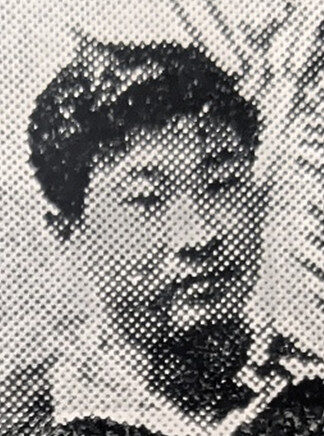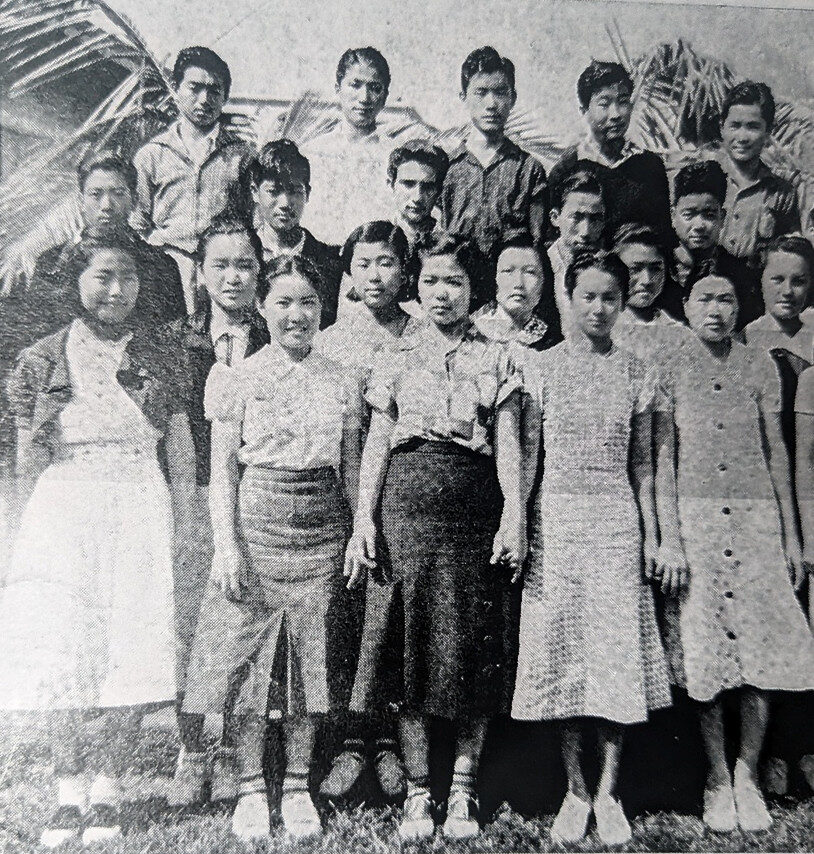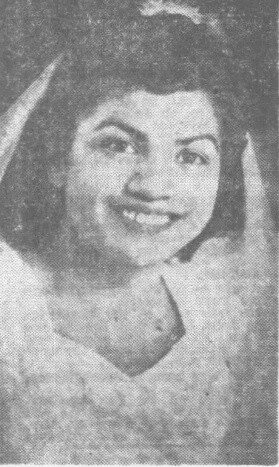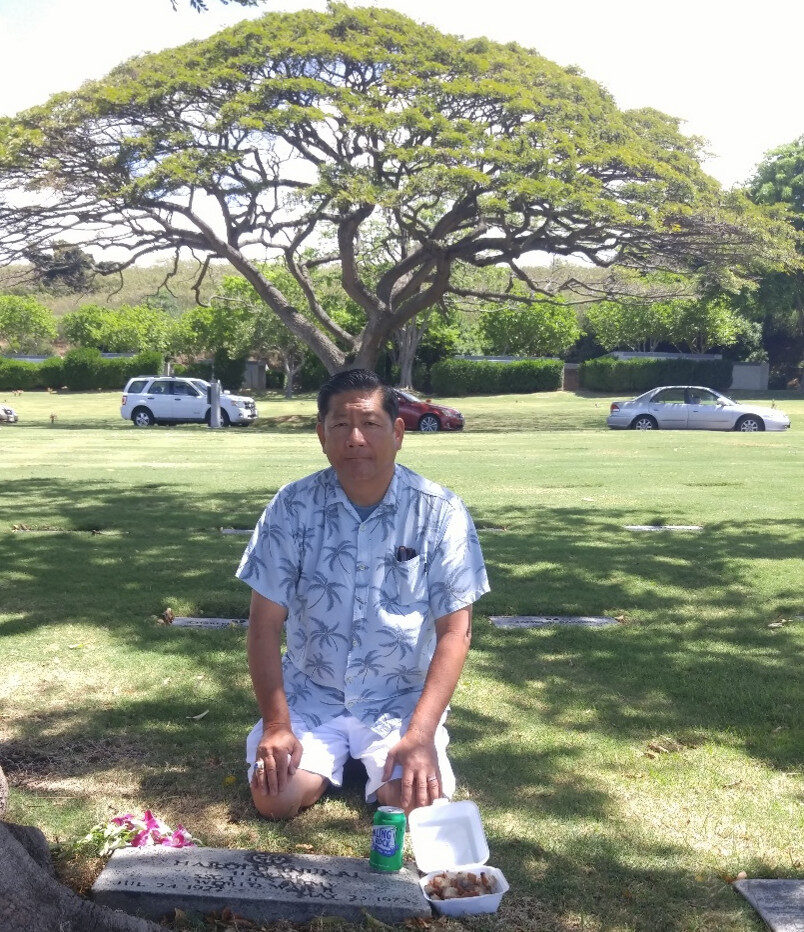Soldier Story: Harold Kenichi Inukai
Soldier Story

Harold Kenichi Inukai
Private First Class
442nd Regimental Company Team
100th Battalion, C Company
Kenichi Inukai was born on July 24, 1922, in Honokaa, Hawaii island, Territory of Hawaii. He was one of seven children of Saheiji and Yurino (Makino) Inukai. His father arrived from Okayama Prefecture, Japan, on the French steamer Amiral Olry on September 13, 1907. His mother arrived from the village of Sho, Tenkubo District, Okayama Prefecture, on the Shinyo Maru on February 18, 1913, under the auspices of her father-in-law, Saikichi Inukai. Kenichi’s siblings were: brothers – Tsutomo and Robert Yoshio, and sisters – Ayako; Beatrice Fumiko; Ruby Chieko; and Helen Hiroko.
In 1930 and 1940, the family was living in Honokaa. In 1930, Saheiji was working on a cattle ranch; in 1940, he was not employed, but his wife was a laborer on the Honokaa Sugar Company plantation. He retired as an employee of the Hamakua Ditch Company. The family were members of the Honokaa Hongwanji Mission.
Inukai attended Honokaa High School, where he was a member of the school’s Glee Club and a graduating senior in 1941. (Note: The photo above is from the school yearbook during his junior year as there was no yearbook in 1941.)

Above: Honokaa High School junior class, 1940
By mid-1942, Harold Inukai, known as “Harry,” had moved to Honolulu for employment. He signed his draft registration card on June 30, 1942, Local Board No. 7 at Farrington High School. At the time he was living at 1502 Nobrega Street. His point of contact was his mother, Mrs. Yurino Inukai, of Honokaa. He was employed by the U.S. Engineers Department on Ward Street. Harry was 5’6” tall and weighed 139 pounds.
Available records indicate that Harold Inukai served in the 1399th Engineer Construction Battalion, A Company, which was activated on Oahu on April 26, 1944. The nucleus of its members came from the 370th Engineer Battalion on Oahu.
On September 15, 1944, he enlisted in the U.S. Army. After an abbreviated basic and combat training period, he arrived about March 25, 1945, to the 442nd Regimental Combat Team in Pisa, Italy, and was assigned to the 100th Battalion, C Company. The Combat Team had been especially requested by General Mark W. Clark for participation in the Po Valley Campaign with the mission of making a decoy attack on the western end of the Germans’ Gothic Line of nearly impregnable mountain fortifications.
From the staging area in Pisa, the regiment left on March 28 to a bivouac area at San Martino, near Lucca. All units, and especially the new soldiers/replacements, utilized all available hours for training, including practicing small-unit problems with their squads and platoons far into the night. Finally, on April 3, the 100th Battalion moved to their forward assembly area in the vicinity of Vallecchia. On the night of April 4, they moved to their line of departure on the hill mass the Allies called “Florida,” relieving elements of the 371st Infantry. The attack on the 2,800-foot Mount Folgorito was about to commence, with the remainder of the 442nd approaching from different peaks. By 7:30 a.m. the ridgeline was secure. The 100th then moved on to take “Georgia” peak – a knob of solid rock that contained at least 15 enemy emplacements. It had been shelled and attacked over a 5-month period and never been taken. In 32 minutes, the 100th and other elements of the 442nd accomplished this mission and routed the enemy.
Other notable stops over the next weeks, as the 442nd chased the Germans north, were: Pariana (April 9); the Frigido River (April 10); Carrara (April 11); Gragnana, Castelpoggio, Mount Pizzacuto (April 13); and Fort Bastione (April 15).
This campaign to secure the west end of the Gothic Line had initially been intended as a diversion for the Allies, as they were attacking farther east on the Italian Peninsula. Thanks in large part to the actions of the 442nd, it had ended up being a full-scale breakthrough, and the west coast was secured. For its part in this, the 442nd was later awarded the Distinguished Unit Citation for the 10 days of bitter action from April 5 to 14.
The 442nd continued on up the peninsula – April 17-25 at Fosdinovo, Mount Nebbione, and Aulla. It now became a race north. Genoa had fallen by April 27 and the 442nd’s 3rd Battalion rode through the city in style the next day. The 100th Battalion reached Busalla, in the mountain pass from Genoa to the Po River, also on April 28. On April 29, the 442nd’s 2nd Battalion rolled into Alessandria in the Po Valley, where about 1,000 Germans surrendered without a struggle. On May 2, the war ended in Italy.
Pfc. Inukai was wounded while in the Po Valley Campaign, and was subsequently returned to duty and participated in the occupation activities.
During the occupation following Germany’s surrender to the Allies on May 8, the 442nd went into garrison duty at Novi Ligure, 48 miles northwest of Genoa. On May 13, Lieutenant General Lucian K. Truscott visited and the Combat Team held a regimental parade and military awards ceremony. This period of relative inactivity was cut short when the Combat Team was ordered to Ghedi Airfield near Brescia – 125 miles east of Novi Ligure. Their new mission was the processing, searching, and guarding of prisoners of the German 14th Army. Passes were also given for 442nd soldiers to visit Milan, Venice, Lake Garda, and the 442nd Rest Center at San Pellegrino. After a brief sojourn at Lecco, in early July 1945, the 442nd was transferred to the Livorno/Pisa area for German POW guard duties.
For his military service, Private First Class Harold Kenichi Inukai was awarded the Bronze Star Medal, Purple Heart Medal, Good Conduct Medal, European-African-Middle Eastern Campaign Medal with one bronze service star, World War II Victory Medal, Army of Occupation Medal, Distinguished Unit Badge, and Combat Infantryman Badge. He also was awarded the Congressional Gold Medal on October 5, 2010, along with the other members of the 100th/442nd Regimental Combat Team. Conferred by the U.S. Congress, the award states: “The United States remains forever indebted to the bravery, valor, and dedication to country these men faced while fighting a 2-fronted battle of discrimination at home and fascism abroad. Their commitment and sacrifice demonstrates a highly uncommon and commendable sense of patriotism and honor.”
He was transported home with other 442nd soldiers by a “point system” – one’s shipment home was determined by length of time in Europe and other factors. Once home, the soldiers were discharged within a few days. According to the Honolulu newspaper, on Christmas Day 1945 Inukai flew to Hilo from Honolulu. Pfc. Inukai reenlisted in the U.S. Army on January 2, 1946 – and was discharged on April 7, 1947.
On November 20, 1948, Inukai married Magnolia Haalipo Naholowaa (known as Maggie) at the Door of Faith church in Honolulu. At the time, he was employed at Pearl Harbor. Their wedding reception was held at the home of the bride’s mother, Mrs. Solomon Naholowaa, at 1577 Nobrega Street.

Right: Mrs. Harold Kenichi Inukai wedding photo, 1948
Two sons were born to the Inukai family in 1950 and 1951. In December 1955 Harry and Maggie were divorced in Honolulu. On November 21, 1956, she married Leonard Allan Keener, a U.S. Air Force serviceman stationed in Tokyo. A few months later, Mrs. Maggie Keener took her two young sons to Japan, leaving on a flight from Hickam Air Force Base in Honolulu on February 25, 1957. At the time, their home address was 3343 Grant Road, Central Point, Oregon.
In the Honolulu City Directory for the 1950s, Harry Inukai was living in Unit 12y-b Ranger Loop, Aiea (Halawa Veterans Houses) and employed as a salesman for Precision Radio.
Harry Inukai married again on April 7, 1961, in Honolulu to Hiromi Matsuura, a native of Wakayama Prefecture, Japan. At the time, they were living at 1226-B Young Street. They had one son, born in Honolulu on March 8, 1962. Later that year, the couple separated and their son was adopted in Hawaii by a U.S. Marine Corps veteran of the Korean War, Emilio Samson, and his wife. In the early 1960s, Harry Inukai lived at 791 Kinau Street, Apt. A-1, and was employed as a supervisor at Libby, McNeill & Libby (pineapple cannery). Harry Inukai and Hiromi divorced in April 1964 in Hilo.
Father Saheiji Inukai died on June 19, 1969.
Harold Kenichi Inukai died at the age of 51 on May 23, 1973, at Laniolu Nursing Home in Honolulu. A graveside service was held at the National Memorial Cemetery of the Pacific at Punchbowl at 9:30 a.m. on June 14, immediately followed by his burial in Section P, Site 729.
Below: Son Troy Takashi Inukai Samson at his father’s grave at Punchbowl Cemetery

His tombstone states that he served in World War II and at the end of his military service his rank was Staff Sergeant. He was survived by his mother, Yurino, three sons; brother Robert Yoshio of Thailand, and sisters Beatrice Fumiko Cooley and Helen Hiroko McMillan of Seattle. At the time of his death, Inukai’s home address was 305 Saratoga Road. His mother Yurino Inukai died on December 20, 1973, in Honokaa.
Below: Son Troy Takashi Inukai Samson pointing to his father’s name on the Go For Broke Monument in Los Angeles

Researched and written by the Sons & Daughters of the 442nd Regimental Combat Team with assistance by his son, who is a member, in 2021 and updated in 2025.